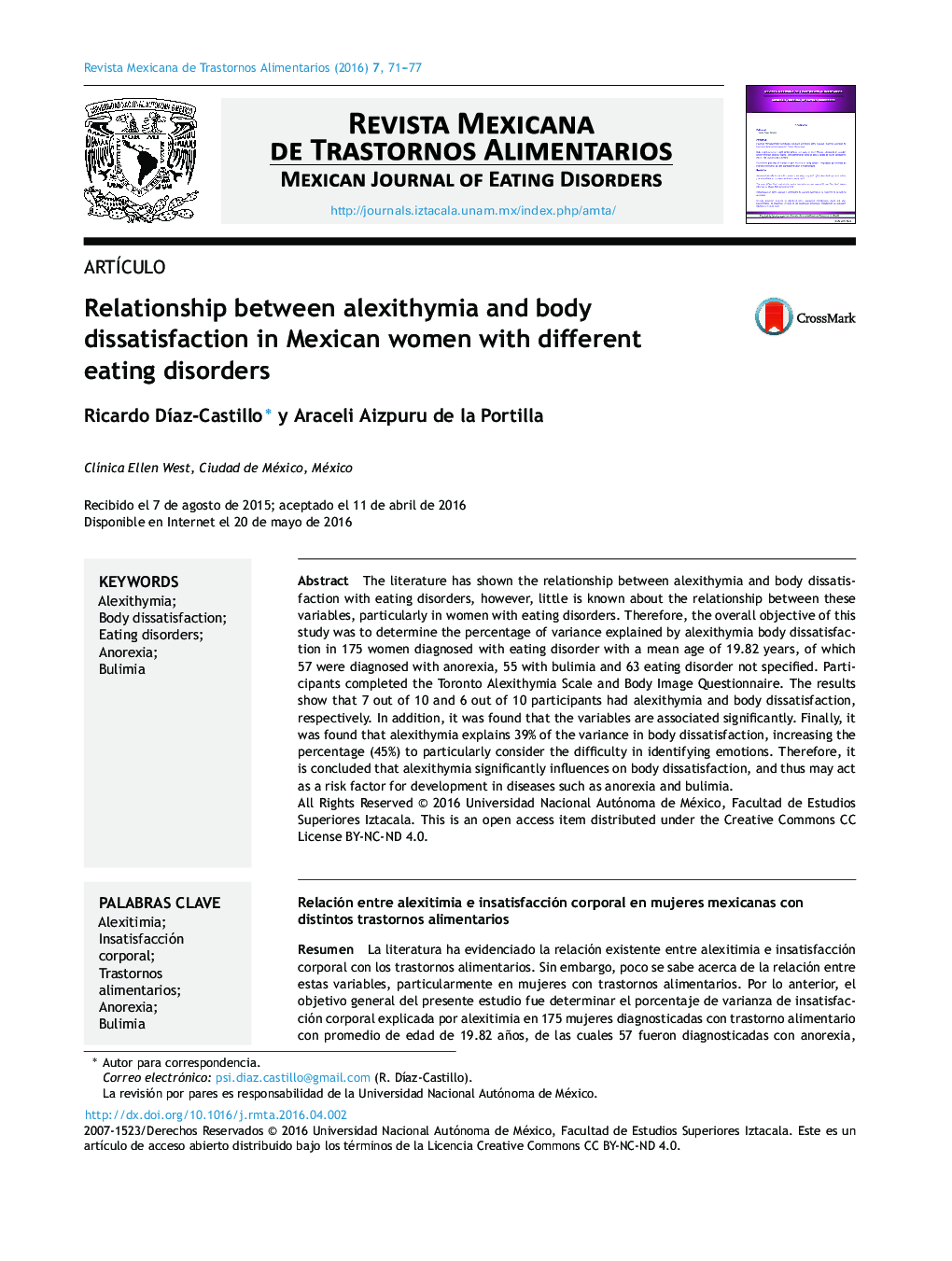| کد مقاله | کد نشریه | سال انتشار | مقاله انگلیسی | نسخه تمام متن |
|---|---|---|---|---|
| 338820 | 1434025 | 2016 | 7 صفحه PDF | دانلود رایگان |
The literature has shown the relationship between alexithymia and body dissatisfaction with eating disorders, however, little is known about the relationship between these variables, particularly in women with eating disorders. Therefore, the overall objective of this study was to determine the percentage of variance explained by alexithymia body dissatisfaction in 175 women diagnosed with eating disorder with a mean age of 19.82 years, of which 57 were diagnosed with anorexia, 55 with bulimia and 63 eating disorder not specified. Participants completed the Toronto Alexithymia Scale and Body Image Questionnaire. The results show that 7 out of 10 and 6 out of 10 participants had alexithymia and body dissatisfaction, respectively. In addition, it was found that the variables are associated significantly. Finally, it was found that alexithymia explains 39% of the variance in body dissatisfaction, increasing the percentage (45%) to particularly consider the difficulty in identifying emotions. Therefore, it is concluded that alexithymia significantly influences on body dissatisfaction, and thus may act as a risk factor for development in diseases such as anorexia and bulimia.
ResumenLa literatura ha evidenciado la relación existente entre alexitimia e insatisfacción corporal con los trastornos alimentarios. Sin embargo, poco se sabe acerca de la relación entre estas variables, particularmente en mujeres con trastornos alimentarios. Por lo anterior, el objetivo general del presente estudio fue determinar el porcentaje de varianza de insatisfacción corporal explicada por alexitimia en 175 mujeres diagnosticadas con trastorno alimentario con promedio de edad de 19.82 años, de las cuales 57 fueron diagnosticadas con anorexia, 55 con bulimia y 63 con trastorno alimentario no especificado. Las participantes respondieron la Escala de Alexitimia de Toronto y el Cuestionario de Imagen Corporal. Los resultados señalan que 7 de cada 10 y 6 de cada 10 participantes presentaban alexitimia e insatisfacción corporal, respectivamente. Así mismo, se encontró que las variables están asociadas significativamente. Finalmente, se encontró que la alexitimia explica el 39% de la varianza en insatisfacción corporal, incrementando el porcentaje (45%) al considerar particularmente la Dificultad para identificar emociones. Por lo anterior, se concluye que la alexitimia influye significativamente sobre la insatisfacción corporal, y en consecuencia puede actuar como factor de riesgo para el desarrollo en enfermedades como anorexia y bulimia.
Journal: Revista Mexicana de Trastornos Alimentarios - Volume 7, Issue 1, January–June 2016, Pages 71–77
